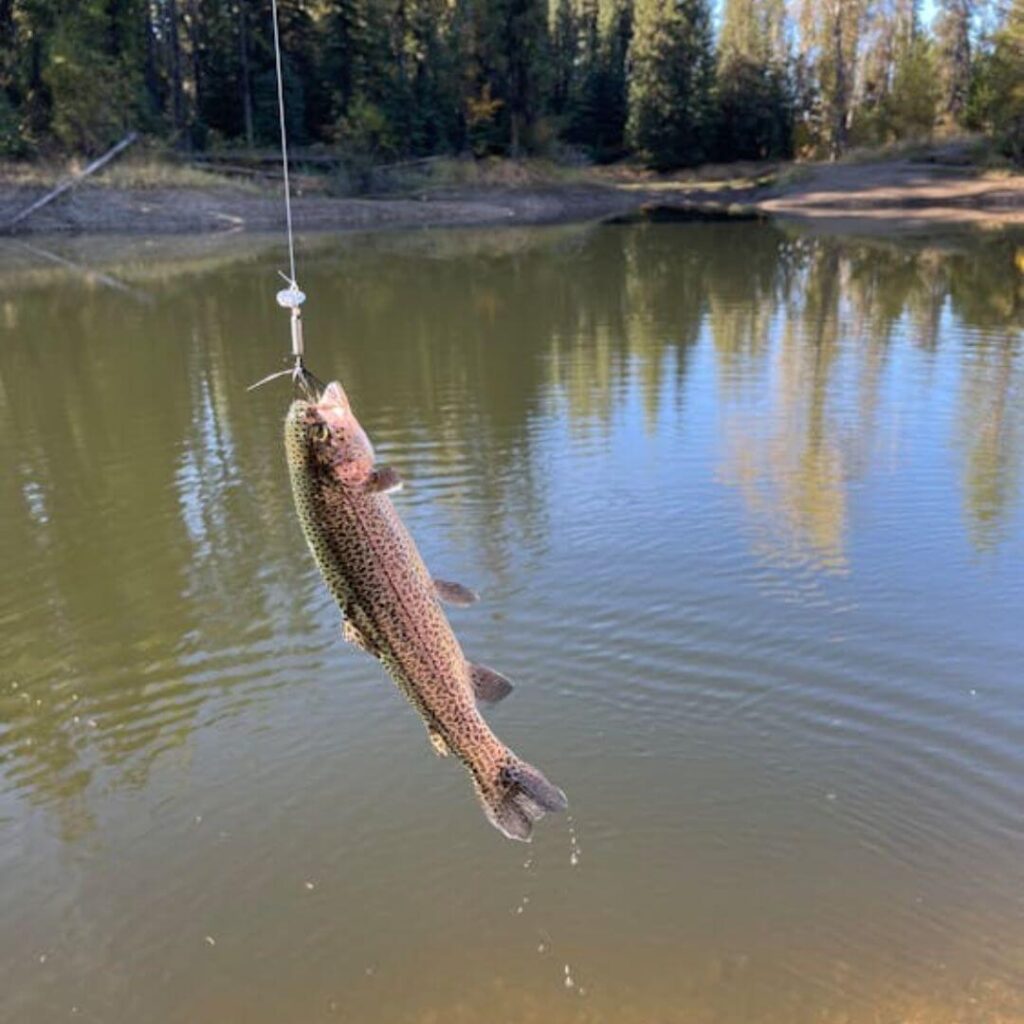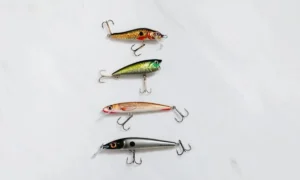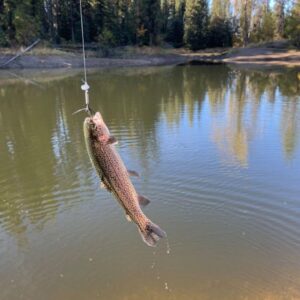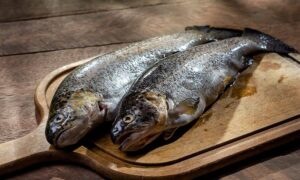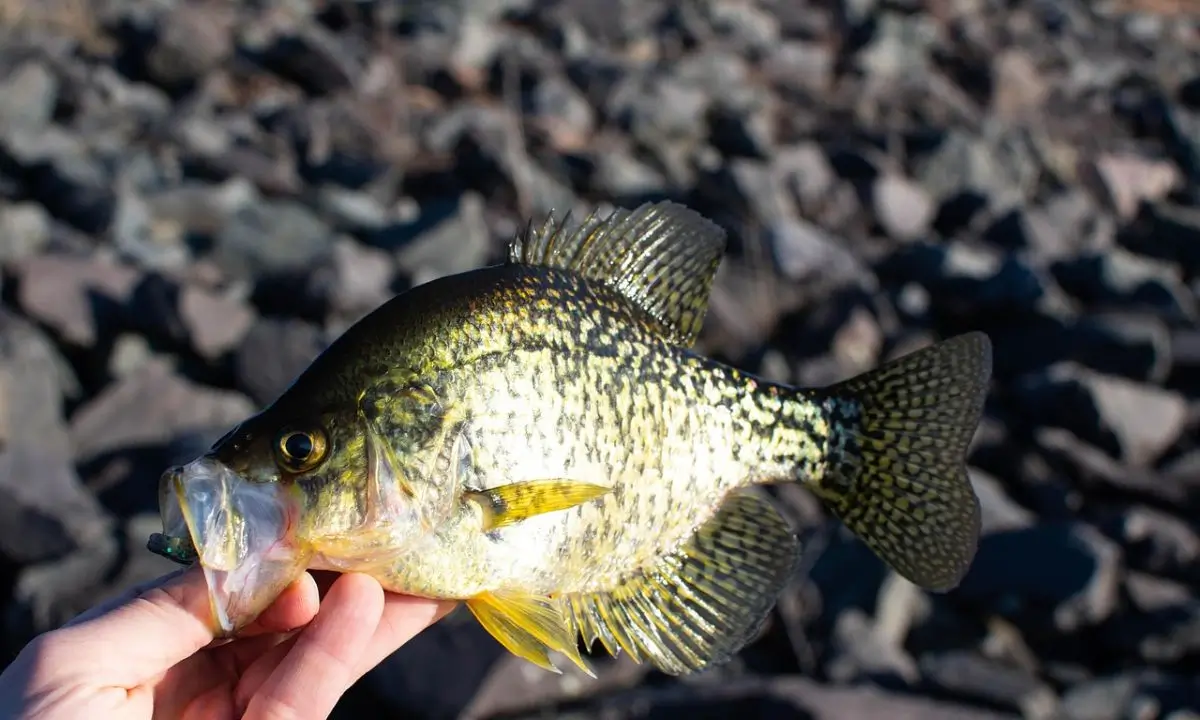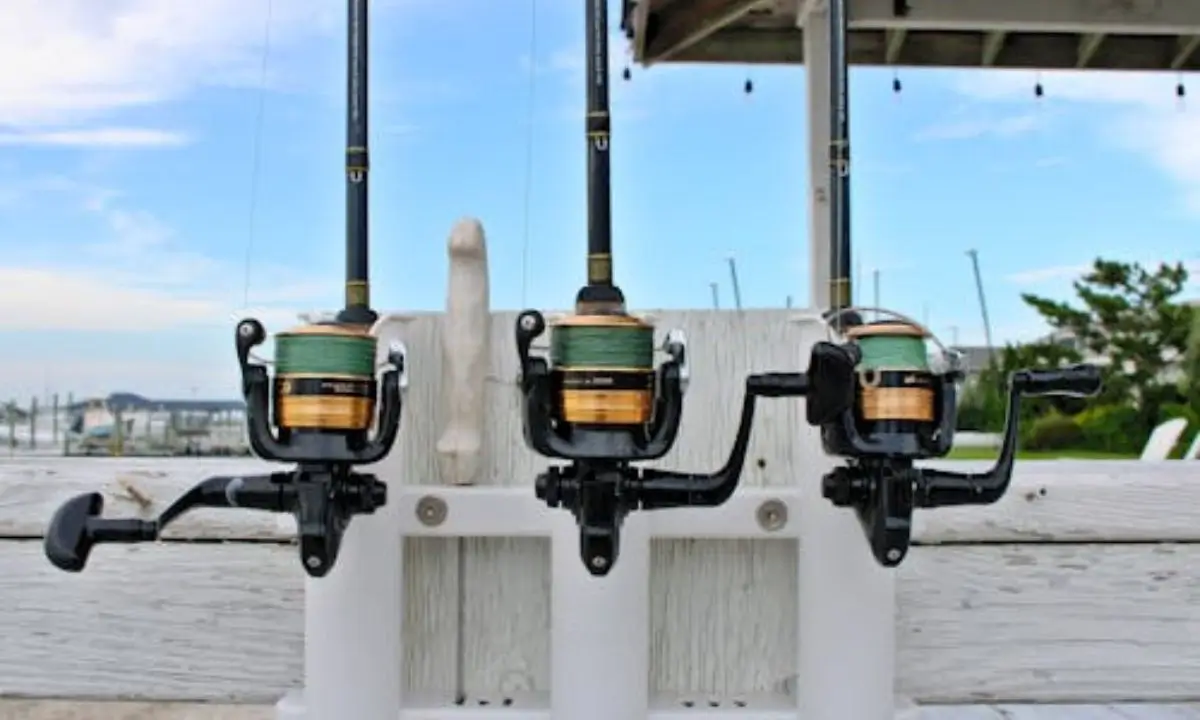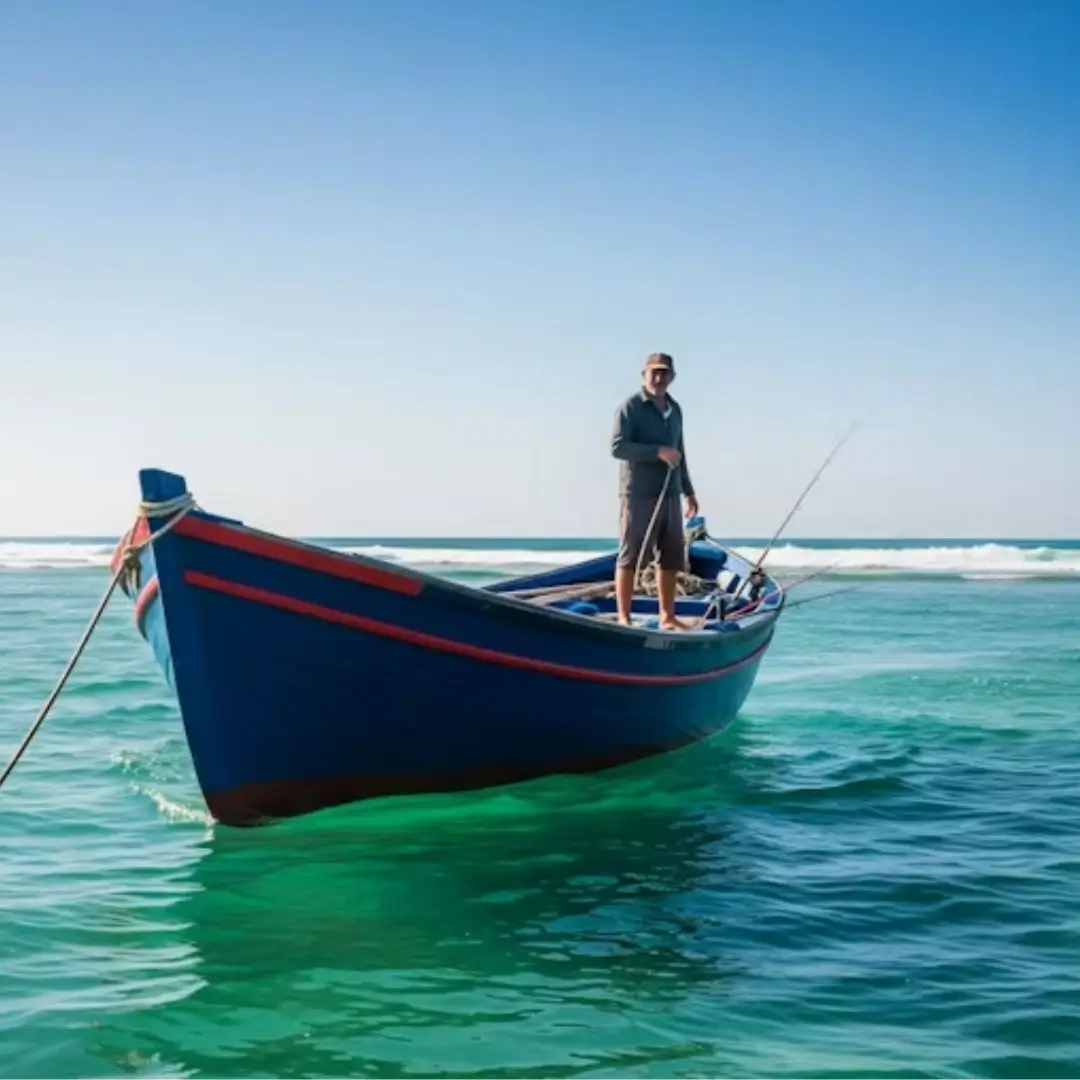Short Overview for what size hooks for trout fishing:
What size hooks for trout fishing? The best hook sizes for trout are between #8 and #14. Use smaller hooks (#12–#14) for light baits like worms, salmon eggs, or flies, and larger hooks (#8–#10) for bigger baits or larger trout. Always match hook size to your bait and trout size.
Introduction
If you’ve ever walked into a tackle shop in the U.S., you know the trout hook section can feel overwhelming. Do you go small for finesse? Large for bigger bites? After 5+ years of trout fishing across rivers, lakes, and streams, I can tell you — choosing the right hook size is not just guesswork, it’s science mixed with experience.
In this guide, we’ll break down exactly what size hooks work best for trout fishing in different U.S. waters, why the size matters, and how to match it with your bait and fishing conditions. Whether you’re chasing rainbow trout in Colorado or brook trout in the Great Smoky Mountains, you’ll have a clear answer by the end. details Make a Fishing Gaff Hook
Why Hook Size Matters for Trout Fishing
Many beginners think a bigger hook means a better catch, but trout are often cautious feeders. Their keen eyesight and tendency to mouth the bait before biting make hook size a critical factor.
- Too big — The hook may look unnatural and scare the fish away.
- Too small — You risk the hook bending, breaking, or failing to secure the trout’s mouth.
Choosing the right size ensures the hook hides well inside the bait, penetrates easily, and increases your hookup ratio. details Reel Gear Ratio Chart
Understanding Trout Hook Sizes (U.S. Standards)
Hook sizes can be tricky to understand since the numbering is backward — a higher number actually means a smaller hook.
For trout fishing in the U.S., you’ll generally use #8, #10, #12, or #14 hooks.
| Hook Size | Best For | Target Trout Size |
| #14 | Small baits like salmon eggs, small flies | Small trout (8–12 inches) |
| #12 | Worm pieces, power bait nuggets, small flies | Average trout (10–14 inches) |
| #10 | Nightcrawlers, small minnows | Medium trout (12–16 inches) |
| #8 | Larger minnows, dough bait balls | Large trout (16+ inches) |
Factors to Consider Before Choosing Hook Size
1. Type of Bait
The bait you choose directly impacts the hook size.
- Live worms → #10 or #12 works best.
- Salmon eggs → #12–#14 for a natural presentation.
- Minnows → #8 or #10 for proper hook penetration.
- Artificial flies → Often #14 or smaller for finesse fishing.
2. Water Clarity
In crystal-clear streams, trout can spot hooks easily. Go smaller (#12–#14) for a stealthy approach. In murky water, slightly larger hooks (#8–#10) are fine since visibility is low.
3. Trout Species
Different trout species have slightly different feeding habits:
- Rainbow Trout → #10–#12 is a safe choice.
- Brook Trout → Smaller sizes like #12–#14 for finesse.
- Brown trout – tend to strike aggressively and often prefer larger hooks, typically in the #8 to #10 range. details Fishing Gaff at Home
Best Hook Sizes for Different Trout Fishing Techniques
Trout fishing in the USA isn’t a “one-size-fits-all” game — it’s all about matching your hook size to your fishing technique. Let’s break it down so you can pick the perfect hook whether you’re casting in a river, trolling a lake, or ice fishing in the winter.
1. Bait Fishing for Trout
Bait fishing is still one of the most effective ways to catch trout, especially for beginners. When using bait like worms, salmon eggs, or PowerBait, smaller hooks work best because trout have excellent vision and can be hook-shy.
- Hook Size Range: #10–#14
- Smaller hooks blend better with the bait, making your presentation look more natural and less noticeable to the fish.
- Pro Tip: Use a thin-wire hook for live bait so the worm can move naturally in the water.
Example:
When I fish for stocked rainbow trout in small ponds during spring, I use a #12 single hook with a nightcrawler. This size is almost invisible underwater, and I’ve noticed my hook-up rate improves by 20–30% compared to larger hooks. details Do Fish Hooks Dissolve
2. Fly Fishing for Trout
Fly fishing demands an entirely different hook approach. Here, you match your artificial flies to mimic what trout naturally feed on.
- For dry flies, sizes #12 to #16 work well for most trout, while #18 to #22 are better suited for selective trout in clear water.
- Nymphs & Wet Flies: #10–#14
- Streamers: #6–#10
Why:
Your hook size needs to match the size of the fly pattern you want to imitate. Smaller sizes work for delicate surface presentations, while larger hooks are better for baitfish patterns.
Real-Life Example:
While fishing in Colorado’s Gunnison River, I used a #20 blue-winged olive dry fly during a hatch. Even though the hook was tiny, the trout were locked in on that specific insect size — resulting in some of my best catches of the season. Details Gear Ratio Fishing Reels
3. Lure Fishing for Trout
Many spinners, spoons, and small crankbaits are equipped with treble hooks, but replacing them with higher-quality ones can improve their effectiveness.
- Small Spinners & Spoons: Treble hooks size #12–#14 or single hooks size #8–#10.
- Why: Smaller hooks reduce missed strikes and cause less damage to the fish, which is great for catch-and-release.
Pro Tip:
When fishing in heavily pressured lakes in California, I swap the stock trebles on my Rooster Tail spinners for single barbless hooks in size #8. This not only meets local regulations in some areas but also increases landing rates for wary trout.
4. Ice Fishing for Trout
When ice fishing in northern states like Minnesota or Montana, hook choice is even more crucial because trout are slower and more cautious in cold water.
- Hook Size Range: #10–#14 for small jigs tipped with bait.
- Why: Smaller hooks let you present bait more naturally in the cold, clear water under the ice.
Matching Hook Size to Trout Species
Trout vary in size and exhibit different feeding behaviors. Here’s a quick breakdown:
| Trout Species | Average Size | Best Hook Size |
| Rainbow Trout | 10–16 inches | #10–#14 |
| Brook Trout | 8–14 inches | #12–#16 |
| Brown Trout | 12–20 inches | #8–#12 |
| Lake Trout | 15–30 inches | #2–#6 |
| Cutthroat Trout | 10–18 inches | #10–#14 |
Note: Larger lake trout often require stronger hooks because they fight hard and have bigger mouths.
Common Mistakes Anglers Make with Trout Hooks
- Using Hooks That Are Too Big – Trout will often inspect your bait before biting, and a large hook can make them suspicious.
- Not Matching Hook Size to Bait – If your bait looks tiny compared to your hook, it won’t look natural.
- Using Dull Hooks – Even the right size won’t help if your hook point isn’t sharp. Always check before casting.
Quick Tips to Improve Your Hook-Up Rate
- Go Smaller in Clear Water: When trout are being picky, downsizing your hook can make all the difference.
- Use Barbless Hooks in Catch-and-Release: They cause less injury and are easier to remove.
- Match Hook Color to Bait: For example, bronze hooks blend well with worms, while silver works with minnows.
- Always Check Local Regulations: Some states have size or barbless hook requirements for trout waters.
Pro Tips for Choosing and Using Hooks for Trout Fishing
When you’re fly fishing for Striped Bass trout, choosing the right hook size is just the start. The way you use and maintain your hooks can make a huge difference in your success rate. Here are some pro-level tips from my years of trout fishing in different waters across the U.S.:
- Match the Hook to the Bait Type
- If you’re using live bait like worms or minnows, opt for single hooks in size #8–#12 for a natural presentation.
- For artificial lures like spinners or crankbaits, make sure the treble hooks are sharp and rust-free.
- Keep Hooks Razor-Sharp
Since trout have sensitive mouths, using a dull hook often results in missed strikes. Carry a small hook sharpener in your tackle box and check sharpness every few casts. - Use Light Leaders with Small Hooks
Using a thin fluorocarbon leader (4–6 lb) along with a small hook creates a more natural presentation in clear water, making trout less wary. - Adjust Hook Size to Water Conditions
- In clear, pressured water, go smaller (#14–#16).
- In muddy or fast-moving water, a slightly bigger hook (#8–#10) is better for visibility and secure hooking.
- Practice Quick Hooksets
Trout often nibble before committing. When you feel a tap, set the hook gently but quickly to avoid spooking them. details How to Make a Gaff for Fishing
Common Mistakes to Avoid When Choosing Trout Hooks
Even experienced anglers sometimes make these errors that cost them fish:
- Using oversized hooks — This reduces your bite rate dramatically.
- Ignoring barbless rules — Some U.S. states require barbless hooks for conservation. Always check regulations.
- Choosing the wrong hook material — Cheap hooks can bend or break; invest in good-quality, corrosion-resistant hooks.
- Not replacing rusty hooks — A rusty hook weakens easily and increases fish injury risk.
Conclusion
The right hook size can make the difference between a successful day and going home empty-handed. For most trout fishing situations in the USA, what size hooks for trout fishing falls between #8 to #14, with adjustments depending on bait type, water clarity, and trout size. Combine this with good-quality hooks, sharp points, and proper presentation, and you’ll see your catch rate improve significantly.
If you want to learn more about trout fishing setups, check out my detailed guide on Best Fishing Line for Trout and Trout Fishing Bait Tips to complete your gear setup on profishingbyjihad.com.
🎣 Ready to catch more trout? Upgrade your fishing game with the right hooks and techniques. Share your favorite hook size in the comments below, and let’s swap fishing stories!
Written by Jihad – profisingbyjihad.com
Can I use size #6 hooks for trout?
Yes, size #6 hooks are on the larger side but work well for bigger trout or when fishing in murky water with large bait. They provide better hook sets for aggressive fish but may be too big for smaller trout.
What’s the most common trout hook size for beginners?
Size #10 to #12 single hooks are beginner-friendly and versatile for general trout fishing in lakes and rivers. These sizes balance hook strength and presentation, making them ideal for novices.
Should I use barbless hooks for trout?
Barbless hooks are excellent for catch-and-release fishing as they reduce injury and make hook removal easier. In some fishing spots, using barbless hooks is mandatory to protect trout populations.
What size treble hooks are good for trout lures?
Treble hooks sized #12 to #14 suit most trout spinners, spoons, and crankbaits. They offer good hooking efficiency without overwhelming the lure’s action.
How do I choose the right hook size for different trout baits?
Absolutely. Using hooks that are too large may scare trout away or result in missed bites, while too small hooks might fail to hook larger fish properly. Adjust hook size based on trout size, water clarity, and bait type.
Are circle hooks good for trout fishing?
Yes, circle hooks are popular for trout, especially when practicing catch-and-release. They tend to hook fish in the mouth corner, reducing deep hooking and increasing fish survival rates. Use sizes #8 to #12 depending on trout size.
Can using the wrong hook size affect trout catch rates?
Absolutely. Using hooks that are too large may scare trout away or result in missed bites, while too small hooks might fail to hook larger fish properly. Adjust hook size based on trout size, water clarity, and bait type.


